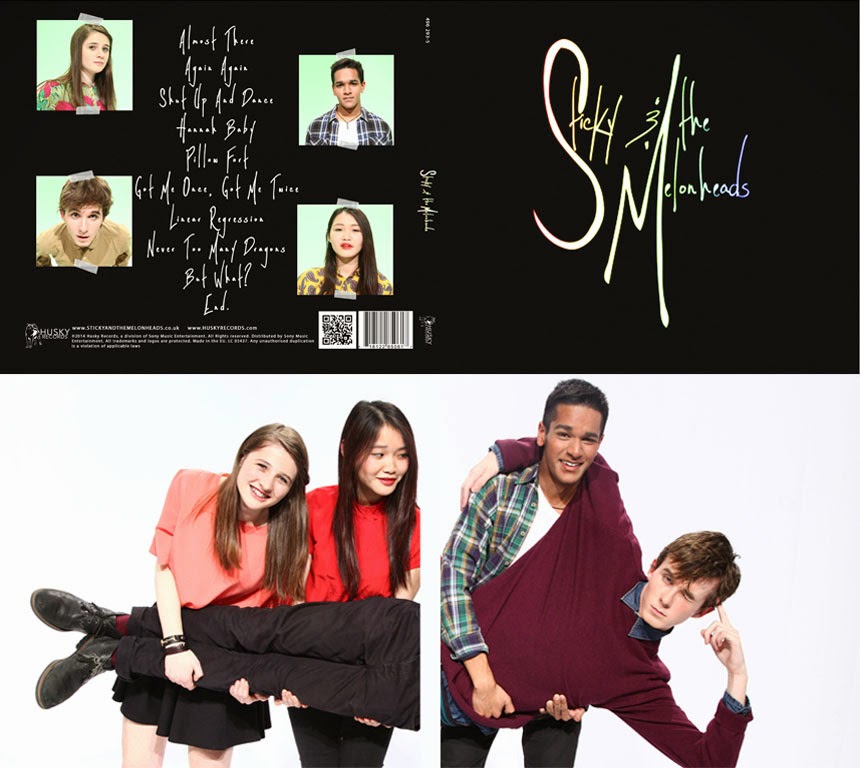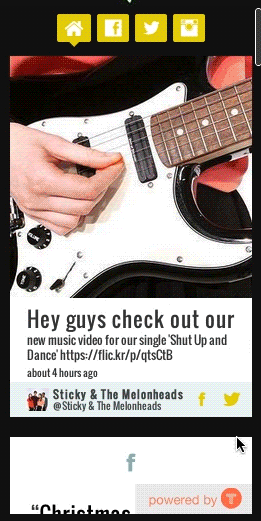In our music video, we used many conventions of indie-pop music videos. Our video is a combination of narrative and performance:
performance - filmed performance, which can be singing, dancing, instrumental or concert clips
narrative - a visual story that is easy to follow, through a series of narrative moments that work together to create the meaning
We drew influence from a number of music videos, but particularly Awkward by San Cisco and Love Is On The Radio by McFly.
We drew a large amount of inspiration from Goodwin's theory about music videos, but we also broke some of these conventions:
GENRE CHARACTERISTICS
"music videos demonstrate genre characteristics" - Whilst our genre of indie-pop tends to break conventions in music videos, there is still the convention that the music videos are different and unique, as this is what the audiences expect from indie music videos. We wanted to conform to the genre convention of having the band performing and playing their instruments, meaning their more authentic image is conveyed, which is conventional of indie and indie-pop artists, such as San Cisco and McFly shown below.
For our band shots, we decided to conform to the convention of having the band members performing - however, we also broke the convention of having mostly male bands, as we have two female band members. We also have a diverse band in terms of race, which also breaks the convention of predominantly white band members - whilst we do have two white members, we also have a Chinese and an Indo-Caribbean member.
 |
| Our band performing and playing their instruments, creating the 'authentic' band image. |
 |
| Brandon and Jacob's costumes compared to Dougie Poynter |
For the male band members, we drew inspiration from Dougie Poynter from McFly, who also has a 'hipster', cool style - for example, his baggy jumpers and skinny jeans, or unbuttoned shirts over a white t-shirt highlight how he is laid back and cool, which is associated with indie artists. The costumes we chose for Brandon and Jacob also connote the 'hipster', indie style in the same way - their costumes are more laid back, as they are wearing skinny jeans, and t-shirts or baggy jumpers like Dougie Poynter. We made sure that the male members were also clean cut so as to make sure they were also role models for the male members of our audience.
REPRESENTATION
In our music video, we represent both women and men equally, as well as representing a number of races. Our band is made up of three different races, showing diversity that is evident in society today, which also means there is a wider reach as more than one ethnicity is present in our video.
colour, as the bright colours connote the pop facet of the music. For example, all of our narrative scenes have a brightly coloured background. This use of bright colour is similar to a number of pop and indie-pop videos, such as:
 |
| All About That Bass by Meghan Trainor |
 |
| Hard Out Here by Lily Allen |
 |
| How Ya Doin' by Little Mix |
"the demands of the record label will include the need for close-ups of the artist (visual hooks or beauty shots)" - We also conformed to the idea that the video should feature close-ups of the artist, or the 'beauty' shots. We decided that although the lead singer is usually the 'star' of the band, we wanted close-ups of all of the band members. This not only gives a variety of shots during the video, but it also portrays the band members as mostly equal in terms of importance. We did, however, use more of the lead singer, and have more than one type of close-up shot, as he is the frontman of the band, and is singing the lyrics. Below are examples of 'beauty' shots in our video, and examples from real media products (Hard Out Here by Lily Allen, Awkward by San Cisco, How Ya Doin' by Little Mix and Love Is On The Radio by McFly).
INTERTEXTUALITY
"there is often intertextual reference" - A main theme of our video is intertextuality. This is due to our narrative scenes, which are referencing different eras through costume, set and actions. In the following Prezi, I will explain the references for two narrative scenes, as well as what we hoped the impact would be.
This was relevant to us, as Iggy Azalea used a popular film (Clueless), that would appeal to a specific audience - in this case, 16-25 year old men and women. This helped us decide what to reference in our own video, as certain generations will pick out certain references. In our case, it was important to pick references that our target audience (16-25 year old indie fans) will pick out.
LYRICS, MUSIC AND VISUALS
"there is a relationship between the visual and the lyrics, and/or the music" - Our video is mostly an illustration and amplification of the lyrics; we went through the lyrics and decided what we thought the song was about (in this case, soul-mates who were "born to get together"). The video below highlights some of the illustration of the lyrics and music within our video.
 |
| This is similar to music videos like All About That Bass, in which Meghan and the dancers 'shake it' when the lyrics are "But I can shake it, shake it". |
CAROL VERNALLIS
We also drew a large amount of inspiration from Vernallis' theory about music videos:
PERFORMANCE AND NARRATIVE
"the video is a visual response to the music" - Our music video is a combination of narrative and performance, which is common within indie music videos, such as:
 |
| Awkward by San Cisco |
 |
| Already Home by A Great Big World |
We visually represented the song through the narrative scenes, by having dance sequences for example, as well as using the performance scenes to visually portray the music being played. We decided to have half of the video as narrative, and half as performance, in order to make sure that the band image was clearly conveyed, whilst the message of the song was also clearly conveyed through the narrative. We drew inspiration from Awkward by San Cisco in terms of the structure of our video - our video is similar to Awkward, although our video is more rigid in structure, as the choruses are always band performance, and the narrative scenes are always during the verses. However, the narrative scenes are also performance, as our lead is still lip syncing throughout each scene, and only stops during the dance sequences. We drew inspiration from many videos, such as the ones shown in the video below:
"editing may match the musical phrases or beats" - In the video below there are examples of how we conformed to Vernallis' theory of editing. We included cutting to match musical phrases and beats, as well as more advanced editing styles.
"when it comes to shot types, extremes are common" - Below is a slideshow showing our framing compared to reference texts. We conformed to the theory of having both extreme close up shots (such as the first slide), or establishing shots during the narrative scenes (slides 5a and 5b):
WEBSITE
 |
| The band logo that is on every page. |
 |
| Our landing page |
 |
| Alt-J's landing page |
For our website, we used the convention of having large amounts of interactivity available for the audience. We drew inspiration from a number of websites, including The 1975 and George Ezra. For example, we have a rolling advert at the top, which leads to specific pages when clicked such as:
We also included videos, such as the music video itself, and a bloopers/behind the scenes video. This is common amongst music artists, as it gives the fans a chance to the see the making of the music videos, as well as what the artists are like when they aren't performing for the camera; this gives the fans a more personal, realistic portrayal of the artist as a person, making them feel more connected. Examples of this include George Ezra's Behind The Scenes video, and The 1975's video page on their website, which has a varitey of videos, such as Live performances - both are picture below.
We also increased purchasing opportunities; firstly we added an explicit link to the shop in the menu bar, as well as on the home page - the link is reminding fans of the recently released album, and links them to a place to purchase said album. We also have the same for purchasing tour tickets.
 |
| We also included an advert about the album on the scrolling advert, again to promote the album and to encourage fans to spend their disposable income on the album. |
PARTICIPATORY CULTURE
We also referenced Henry Jenkin's participatory culture theory, which can be defined as "all must believe they are free to contribute and that what they contribute will be appropriately valued". We included:
- social media links:
 |
| Our social media links - the band Facebook, Twitter and Instagram pages, as well as the i-Tunes page - we referenced sites such as George Ezra's, as shown below: |
 |
| He also has Facebook, Twitter and Instagram links |
We also included a live feed on the homepage of our website, so that the social media pages are clearly accessible:
- a sign up page, where fans can either write a message to the band, or they can sign up for a newsletter:
 |
| We also decided to give fans the option of messaging the band directly; this is to encourage the sense of connection with the band. |
 |
| We drew inspiration from George Ezra again, along with other artists, who have the conventional Sign Up pages. |
We decided to make the competition about creating content as this means the fans feel like they have contributed to something - in this case it's making a video to the new single. It also helps them to feel more connected to the band and each other, as they can watch other people's entries, and they feel as though the band will watch them too. We drew inspiration from bands like McFly and Walk The Moon:
INSTITUTIONAL INFORMATION
We also followed the convention of having institutional information on every page of the website; our institutional information includes the record company logo, website, copyright, and a contact page. This is similar to websites such as George Ezra and Alt-J.
| We included a Terms & Conditions page and a Privacy Policy, as well as the copyright and contact page - on the contact page we included the address, a map and ways to contact the company. |
Examples from Alt-J's and George Ezra's websites:
ALBUM ART
Below is a Prezi explaining the conventions used and broken in our album art design:
Below is a Prezi explaining the conventions used and broken in our album art design:

































No comments:
Post a Comment